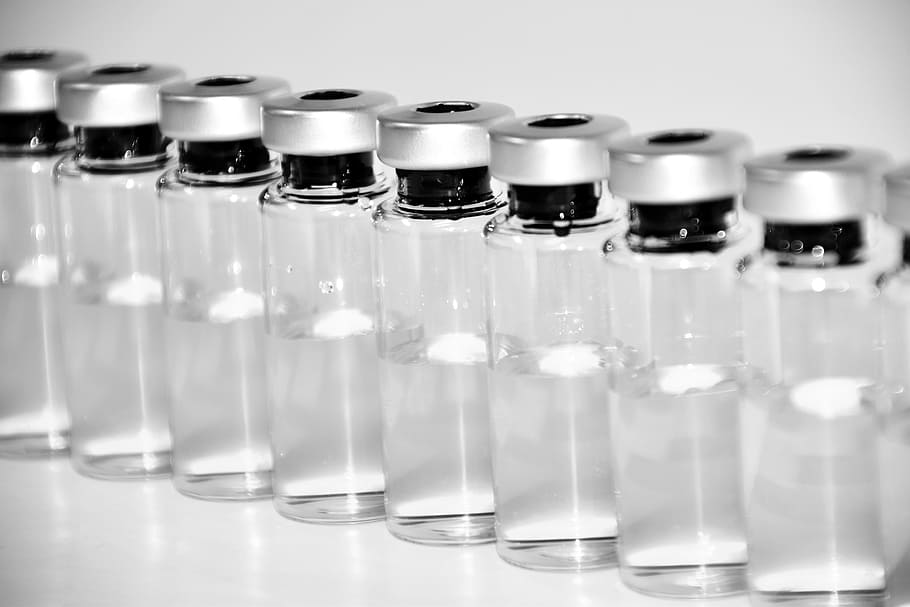After Pfizer and Moderna both announced promising interim data from large scale trials, at least three other candidates seem only a few weeks behind. AstraZeneca, Sinovac, and Johnson & Johnson all seem right on track for a vaccine in early 2021.

AstraZeneca trials show strong immune response in older adults
For months, AstraZeneca was considered one of the pack leaders for a coronavirus vaccine, and while results are slightly lagging behind the likes of Pfizer and Moderna, AstraZeneca is still a key player in the vaccine race.
The British-Swedish pharma giant has just announced results from a study of 560 healthy adults, including 240 over the age of 70 years. The study assessed the safety of the vaccine and the immune response it produced. They found few side effects and strong immune responses across all age groups, at both standard and low doses. The results have been published in The Lancet.
Inducing immune responses in the older population has been one of the key challenges of vaccine developers, and this seems to bode well for the AstraZeneca vaccine. However, the study only looked at the immune response and did not assess efficacy at preventing infection
(as Pfizer and Moderna have done). The large-scale Phase 3 trials are already underway and could be done within weeks, but we can’t truly ascertain the efficacy of the vaccine before those results are published.
Nevertheless, AstraZeneca seems confident to demonstrate the ability of its vaccine by the end of the year. In a recent press conference, the company’s CEO Pascal Soriot said that if regulatory approval moves fast, the vaccine could even start distribution in December.
Sinovac vaccine also triggers immune response
The China-based biopharmaceutical company Sinovac also published promising trial results this week. The Sinovac study was somewhat similar to the AstraZeneca one: it assessed whether its vaccine candidate triggers an immune response — and it did.
The experimental vaccine candidate triggered a quick immune response, although the level of antibodies produced was lower than in people who had recovered the disease.
Like AstraZeneca, the trial did not assess vaccine efficacy, and we’ll have to wait for large-scale trials if that happens.
If they do work, the AstraZeneca/Sinovac vaccines would be more attractive than the Pfizer/Moderna one in one key way: they need to be refrigerated, not frozen. Pfizer’s vaccine is the most demanding of the bunch, requiring storage at -70 degrees Celsius (-94 Fahrenheit). Moderna’s needs to be stored at -20 degrees Celsius, which is more manageable. Meanwhile, the AstraZeneca and Sinovac vaccines at normal fridge temperatures of 2 to 8 degrees Celsius (36°-46°F).
Johnson & Johnson expects regulatory approval by February
Another pharma giant just one step behind is Johnson & Johnson. J&J hasn’t announced any new trial results, but Dr. Paul Stoffels, Johnson & Johnson’s chief scientific officer, told Reuters that the company expects to have 60,000 people enrolled in a late-stage trial by the end of December, and if everything goes according to plan, regulatory approval could come by February.
J&J’s vaccine would have a key advantage over other competitors (if it works, that is): it only requires a single dose. Given the large-scale vaccination campaigns that would need to be rolled out, the difference between a single and a double dose could be huge. However, the company is also running a two-dose trial, just in case.
We still have to wait a couple more months for large-scale results from J&J, however.
The more the merrier
The vaccine progress has been remarkable. Vaccine development usually takes 10-15 years for fruition, so when the one-year timeline was first mentioned around March, many viewed it as overly optimistic. Now, it seems that we may have more than one vaccine in even less than a year.
Ironically, the surging number of cases also sped up development a bit. In order for large-scale trials to be completed, you need to wait until a certain number of people gets infected, to compare vaccine efficacy.
However, vaccines won’t swoop in and save the day just yet. Cases are surging across most of the Western world and show few signs of slowing down, with many hospitals and intensive care units being already full.
It’s excellent that we have many vaccine candidates, it should ease production and distribution quite a bit, but it will still be quite a challenge nonetheless — and it will be a while before the vaccine reaches the general population. The first ones to get the vaccines will undoubtedly be doctors and first-line medical workers. Then, the plans start to differ somewhat: some countries, like the UK, want to vaccinate the elderly and vulnerable, while others, like France, would rather focus on at-risk workers.
Ultimately, no matter which plan becomes implemented, the general population will be the last to receive the vaccine.
Until then, social distancing, masks, and hygiene are still our key allies.









